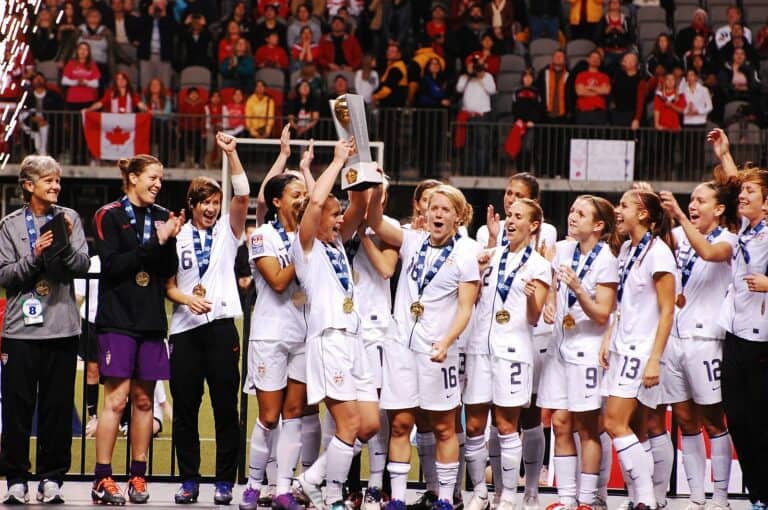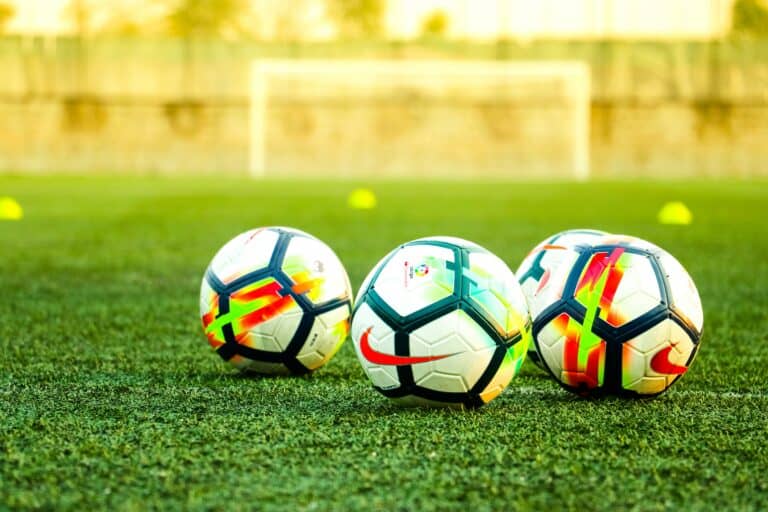
Alex Blutman is a student at Harvard Law School and a member of the Labor and Employment Lab.
Mega-sporting events are rife with human rights abuses, but the Tokyo Olympics and Qatar World Cup have focused the spotlight on the labor violations and abuses suffered by workers at these events. Laborers in Tokyo suffered mistreatment, overwork, low wages, and dangerous working conditions. In Qatar, workers have been subject to debt-inducing recruitment fees, lies about salaries, unpaid wages, forced labor, inadequate living conditions, retaliation for complaints, and employers failing to provide or confiscating key documents, rendering workers unable to safely leave the worksites or country. Over the past decade, more than 6,500 migrant workers from south Asia have died, and the Qatari government has failed to adequately investigate 38 World Cup-related deaths.
Tokyo and Qatar represent merely the most recent examples in a pattern of labor abuses (2008, 2014 Olympics; 2014, 2018 World Cups) at mega-sporting events, but accountability is fleeting. Mega-sporting events are a complicated labyrinth involving the internationalization of labor, national and international legal standards, and authority dispersed throughout a sophisticated web of domestic and local governments, organizations, and corporate entities.
Take the Olympics, for example. The International Olympic Committee (“IOC”) is a non-governmental, not-for-profit organization whose role as guarantor of the Games is supported by National Olympic Committees (“NOCs”). After an arduous candidature process, the IOC selects a Host City, which, along with the Host NOC, signs a Host City Contract. An Organizing Committee for the Olympic Games (“OCOG”) is formed, itself a non-profit legal entity responsible for planning and delivering the Games. The OCOG and host country agencies may also be parties to the Host City Contract. Other entities—national governments, public and private sector financiers, and contractors (plus sub-contractors) employed by the OCOG—also play roles. World Cups involve a similarly structured process based on the Organizing Association Agreement signed by FIFA and the host country’s football association.
This layered structure diffuses responsibility, allowing the organizing bodies to avoid repercussions for harms. So, what leverage can be exerted on these organizations to motivate greater efforts to protect workers?
Hard law remedies are primarily inapplicable, as FIFA and the IOC are subject neither to national labor laws nor international human rights agreements. In 2017, a Swiss court dismissed a domestic tort law suit requesting the court find FIFA responsible for human rights violations of workers in Qatar. The court found the plaintiffs’ allegations—that FIFA wrongfully selected Qatar as host country without ensuring proper worker protections and failed to demand reforms—vague. Plaintiffs couldn’t bring the case before a Swiss Labor Tribunal because FIFA was not the direct employer of the plaintiff worker. Whereas a multinational company may face liability for pollution caused by its foreign-incorporated subsidiary, the harms to workers in Qatar resulted not from FIFA’s direct action, but from conditions perpetrated by employers and the government’s non-enforcement. Still, the Organizing Association Agreement grants FIFA extensive authority, such as stadium construction approval rights and discretion to conduct inspections and issue directives. In Qatar specifically, FIFA owns 51% of the LLC created to organize the tournament. Thus, FIFA has leverage to influence contractors to prevent and mitigate abuses—a point the Swiss court recognized, expressing in dicta that FIFA could have a legal duty because of its power to call for respect of human rights in Qatar.
Soft law instruments targeting private actors, such as the UNGPs and OECD Guidelines for multinational enterprises, are another tool. In 2015, Building and Wood Workers’ International (“BWI”) submitted allegations of human rights violations by FIFA in Qatar to the Swiss National Contact Point (“NCP”), a body charged with resolving issues arising from the non-observance of OECD Guidelines. The NCP’s mediation panel confirmed that “FIFA’s involvement in the…2022 World Cup and…the contractual relationship with its direct counterparties can be considered activities of commercial nature, to which the OECD Guidelines are applicable.”
Moreover, FIFA and the IOC have voluntarily incorporated human rights, and specifically labor, guidelines into their governance and bidding systems (e.g., FIFA expressly mentions the UNGPs in their human rights policy). However, these moves follow a history of awarding hosting honors to governments incapable of preventing and remedying violations. Until recently, the Games and World Cup bidding processes included no reference to human rights protection. Now, the organizations include requirements in the bid and candidature processes, as well as in host city contracts.
These commitments suffer limitations. The new IOC procedures bind only public authorities, and they limit protection of rights to only those principles “applicable in the Host Country,” likely meaning only standards to which the Host Country has consented. Considering that staging a mega-sporting event often requires considerable migrant labor, it’s troubling that neither of two upcoming hosts (France and the U.S.) has signed the UN treaty governing the protection of migrant workers. Ultimately, the success of the reforms will depend on interpretation and enforcement, but the organizing bodies could do more, such as including specific human rights benchmarks in the bidding evaluation, to scrutinize potential hosts more carefully.
In response to negative media attention, FIFA and the IOC have devised monitoring and accountability procedures for labor violations committed by host countries and private employers. Player participants have been more willing to go public with criticism, as athlete commissions, such as the World Players Association, have formed to represent athletes and give them a voice. Meanwhile, the advocacy of civic groups, such as Amnesty International and HRW (which often share reports with and request responses from FIFA and the IOC), and the grassroots campaigning of local activists have coalesced into an informal anti-Olympics movement. Public pressure has no doubt influenced the organizing bodies to deter the abuses previously given haven under their systems.
Guidelines adopted in 2009 promised that the IOC would intervene in cases of “serious abuse, such as…abuse of migrant workers at Olympic venue construction sites.” However, a BWI report accused the IOC of not only failing to inquire into alleged labor and safety violations at Tokyo 2020 venues, but also of asking the International Labour Organization, a specialized UN agency, to manage investigations instead. HRW has recommended that the IOC establish a standing committee on human rights (as did a 2020 independent expert report) that would include an independent commission to investigate and report on labor-related abuses.
FIFA’s introduction in 2016 of a system to monitor labor conditions at stadiums being built for the 2018 World Cup suffered some deficiencies, including lack of transparency about violations, no visits to non-stadium infrastructure sites, and workers’ being unaware of the program’s existence altogether. More than a year after its initiation, HRW concluded that FIFA “has yet to fully deliver on its commitments to conduct effective monitoring of labor conditions…”
Hard law remedies, soft law guidelines, and public pressure have all, to varying success, influenced how international governing bodies like FIFA and the IOC have managed mega-sporting events that invariably foster an environment of worker abuse and labor violations. While some developments are encouraging, it’s clear that pushing no single lever will make mega-sporting events a safe place to work. The Olympic Games and World Cup are massive undertakings, the execution of which involves a complex web of overlapping responsibilities and gaps in accountability. Plugging those gaps may mean pushing as many levers as possible.








Daily News & Commentary
Start your day with our roundup of the latest labor developments. See all
July 11
Regional director orders election without Board quorum; 9th Circuit pauses injunction on Executive Order; Driverless car legislation in Massachusetts
July 10
Wisconsin Supreme Court holds UW Health nurses are not covered by Wisconsin’s Labor Peace Act; a district judge denies the request to stay an injunction pending appeal; the NFLPA appeals an arbitration decision.
July 9
the Supreme Court allows Trump to proceed with mass firings; Secretary of Agriculture suggests Medicaid recipients replace deported migrant farmworkers; DHS ends TPS for Nicaragua and Honduras
July 8
In today’s news and commentary, Apple wins at the Fifth Circuit against the NLRB, Florida enacts a noncompete-friendly law, and complications with the No Tax on Tips in the Big Beautiful Bill. Apple won an appeal overturning a National Labor Relations Board (NLRB) decision that the company violated labor law by coercively questioning an employee […]
July 7
LA economy deals with fallout from ICE raids; a new appeal challenges the NCAA antitrust settlement; and the EPA places dissenting employees on leave.
July 6
Municipal workers in Philadelphia continue to strike; Zohran Mamdani collects union endorsements; UFCW grocery workers in California and Colorado reach tentative agreements.